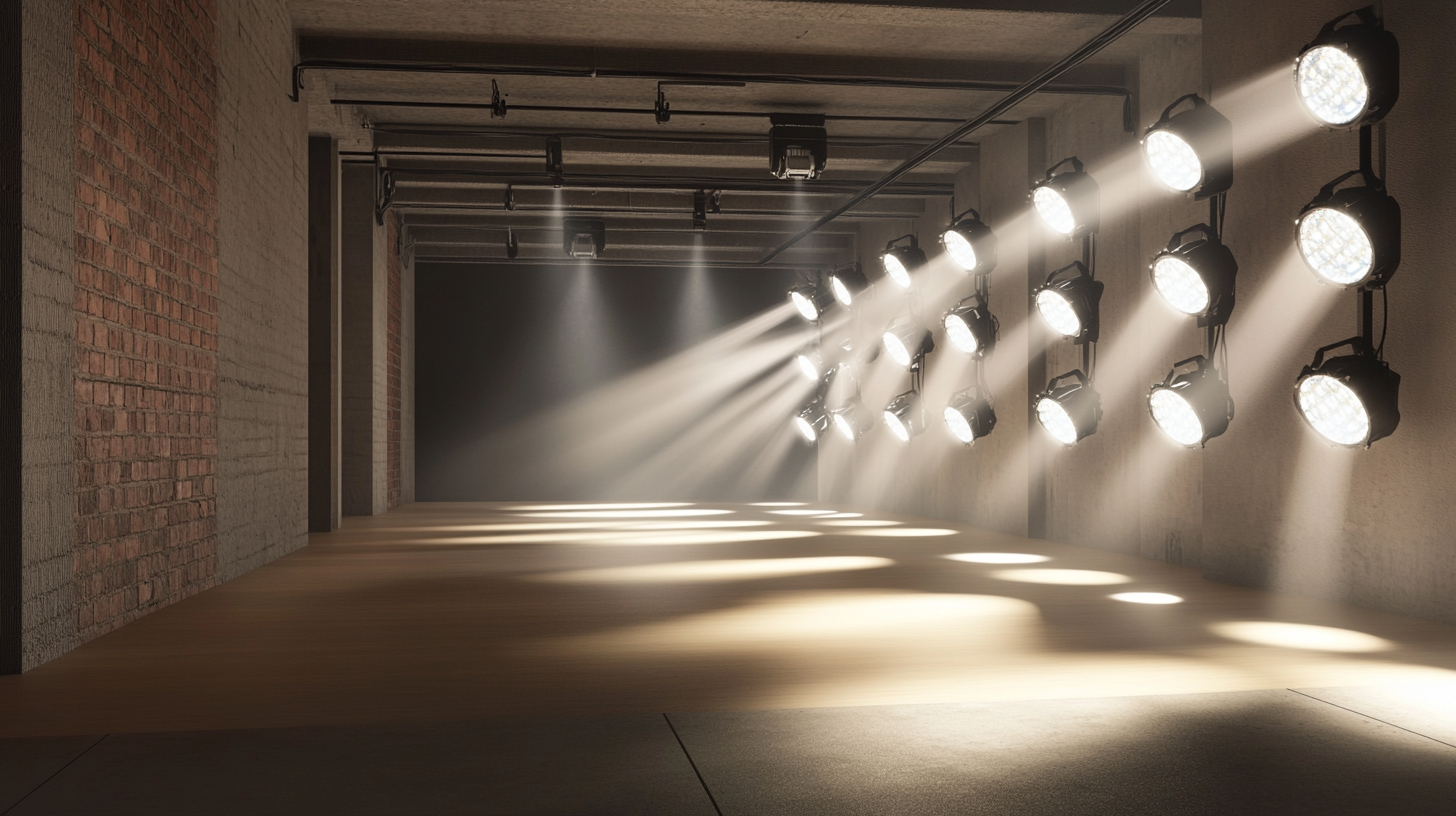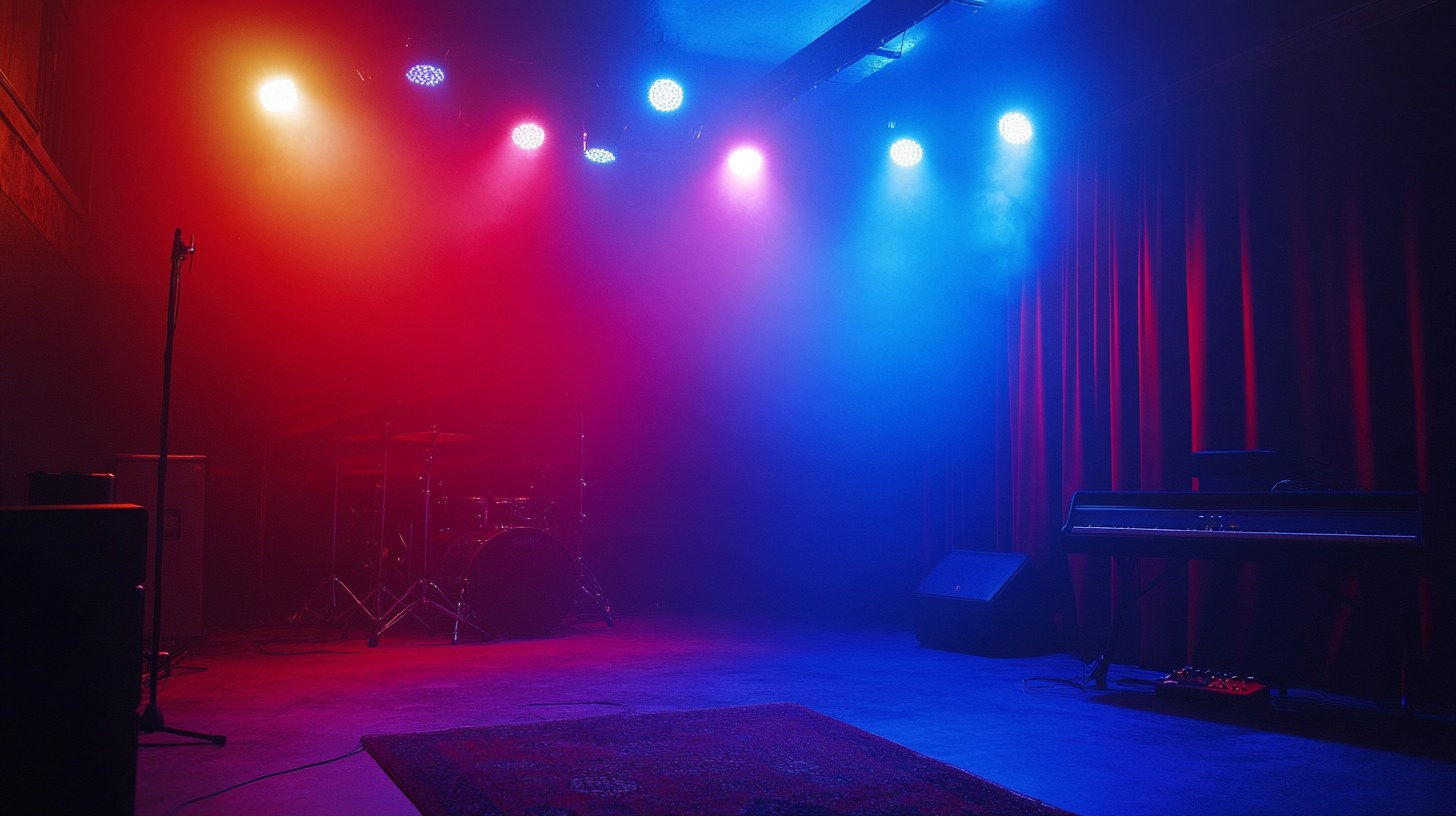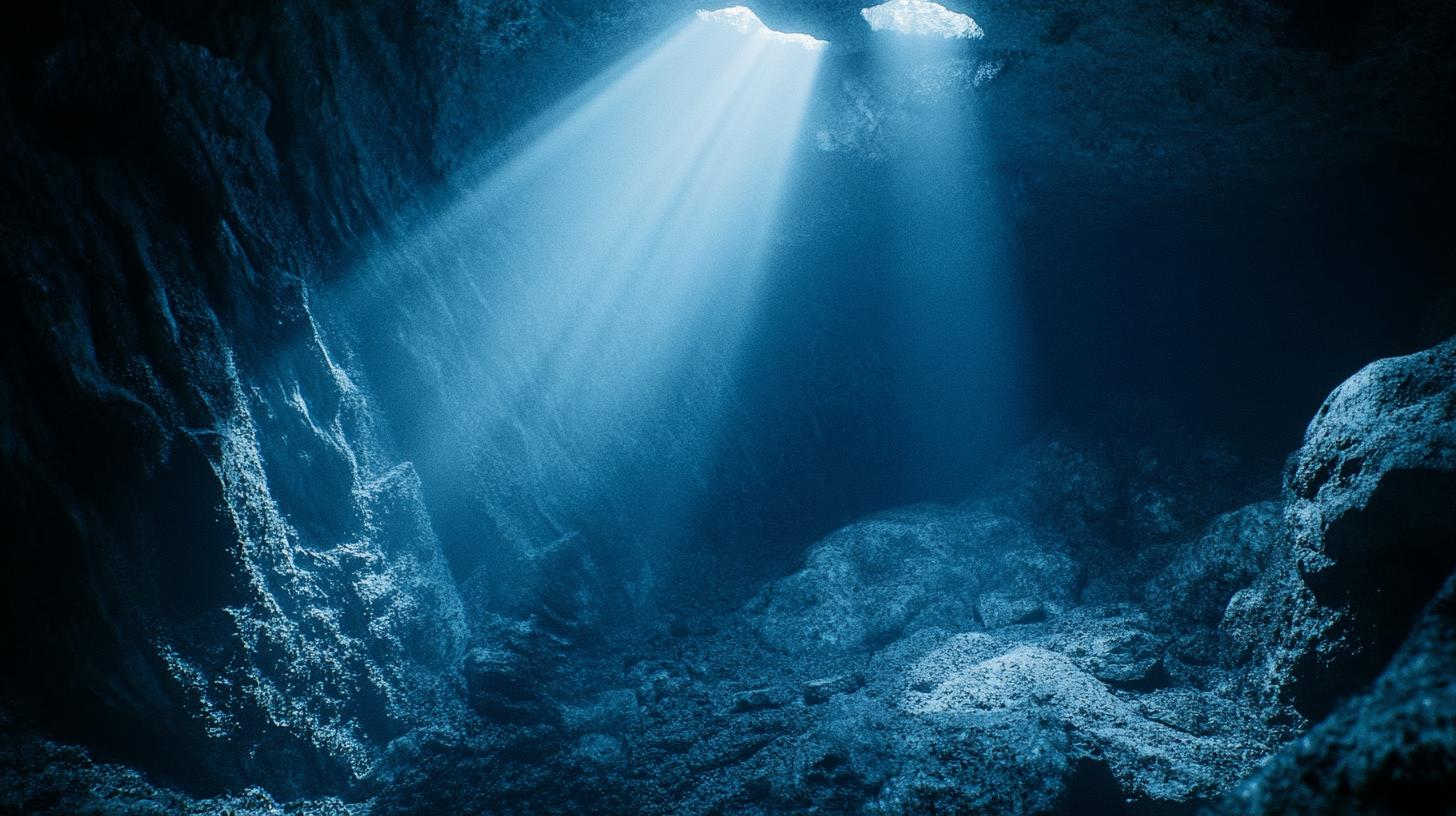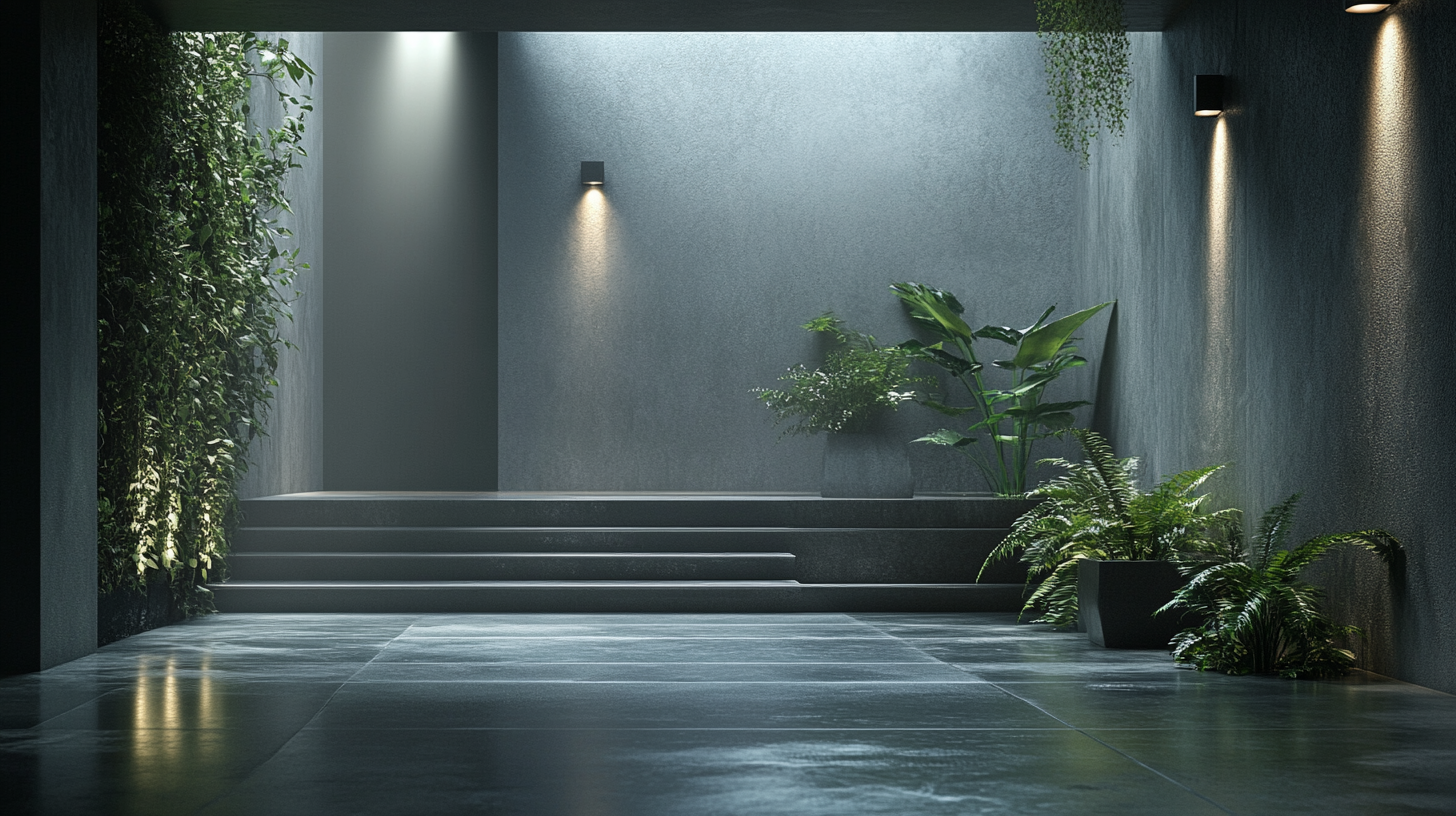Discover Innovative Options for Led Spotlights Beyond the Ordinary
Over recent years, LED spotlights have established the hallmarks in modern lighting portfolios for sustainability. The report of the U.S. Department of Energy shows that it expects lighting from LEDs to reach three-quarters of the entire U.S. lighting market by 2030. Such various measures are being adopted to possibly usher all these indicators into bright reliance on the technology. Furthermore, as LED spotlights potentially last longer than common incandescent bulbs and consume less energy, they serve as functioning light sources while promoting sustainability and economic savings. Well, the demand for any further advancement in lighting continues to grow-the burning question centers on whether LEDs will then reach beyond the traditional forms of usage.
That warrants looking beyond ordinary lighting applications with the incorporation of LEDs into features and functions that give a lift to most environments. Increasing things are pointing towards a tendency toward customized and smart lighting systems, neatly merging with the today's modern aesthetics. Furthermore, these standards confirm that the smart lighting global market size will grow at about $78.2 billion before 2026, as found by a market research center called Markets and Markets. That is why this study focuses on introducing new possibilities and developments so that we can optimize the role of LED spotlights in space and support people in reconsidering their choices in light adopting the unordinary.

Exploring Unique Uses of LED Spotlights in Home Decor
LED spotlights have gone beyond just being available in lighting; they can be finally diversified as elements in home interior design. As stated in a report by the American Lighting Association, residential use for LED lighting applications has increased by more than 30%, especially in homes because of energy-saving features and design flexibility. More For what homeowners seek is new combinations with LED spotlights as the illuminators in that they provide light to beautify the interiors. Spotlights are interestingly incorporated in accentuating certain architectural elements. Homeowners, for example, can add dramatic focal points by placing spotlights above the crowns on top of the ceiling, along the contours of walls, or highlighting any pieces of art on the walls. Evidence by a study made by the National Council on Qualifications for the Lighting Industry holds that when lighting is strategically placed, it will not merely beautify but also will allow space to appear wider or may even have an inviting aspect to the rooms. Furthermore, the charm of the spotlights can be incorporated creatively into the exterior environment to set the scene for magical patios and gardens. A recent report by the Landscape Lighting Association revealed that almost 70% of homeowners lean towards the option of integrated outdoor lighting solutions, mostly with LED as it gives long-lasting solutions and emits low heat. By amplifying outdoor features or creating a cozy atmosphere for entertaining outdoors, homeowners can enjoy some significant outdoor benefits. As newer users learn to use the LED spotlight differently, the market is also growing, evolving, and introducing a new armada of designs and functionalities. For brand-new inspiration and ideas, the interior designer recommends trying color experimentation and dimming to customize the effects on individual tastes and settings in rooms.

Transforming Outdoor Spaces with Creative LED Spotlight Applications
In the last couple of years, outdoor spaces have turned into extensions of living spaces, giving way to creative uses of LED spotlights to serve both functional and aesthetic purposes. The 2034 Outdoor Furniture Market Size and Share Report claims that the global market for outdoor furniture will grow from $16.9 billion in 2025 to a whopping $25.3 billion by 2034, with a compound annual growth rate of 4.6%. Such rapid growth is an indicator of booming interest in creating hospitable and well-lit environments where families and friends can congregate.
LED spotlights become an important ingredient in the metamorphoses of these outdoor spaces. Energy-conscious and versatile, they serve various illuminating purposes: to accentuate architectural features, light pathways, and create an ambient atmosphere for social gatherings. Homeowners are actively using colored LED spotlights to party or highlight certain elements in the garden, contributing to a greater vibrancy and charm after dark. Designers and homeowners alike welcome this creativity, and with it, the opportunity to create customizable and therefore switched-on lighting settings begins to transform the ways in which we experience nature right out in our backyards.
The fast-evolving smart lighting technology has also created great prospects for the integration of LED spotlights in outdoor design. Users can adjust brightness and colors to their needs-light settings for intimate dinners with loved ones twisted to a party-like glare for a grand occasion-due to remote control and automation features. Truly, the paradigm shift we are witnessing in outdoor illumination makes LED spotlights not just an aid for lighting, but an instrument in creating transformable and multiuse outdoor spaces to suit our life.

Innovative LED Spotlight Designs That Challenge Traditional Aesthetics
Everything has an evolving nature, so does lighting design. Innovative designs of LED spotlights keep emerging, moving far away from traditional-looking types, thereby redefining the idea of illumination. An enclosed report by Market Research Future estimates that by 2026, the worldwide LED lighting market will exceed USD 100 billion, mainly due to the technological advancement and demand from consumers for sustainable solutions. This expansion encourages designers to liberate themselves with forms, colors, and functions that defy the traditional standards of spot-like designs.
One of the leading trends would be the smart integration of LED spotlights with lighting experience customization. Smart LED spotlights are app-enabled, after which the users can have control in modifying the intensity from bright to dim, color temperature, or even build up dynamic lighting scenes through the app. A recent report from Grand View Research states that the smart lighting market is projected to grow at 24% CAGR from 2021 to 2028. Such an upsurge evidently means there is a shift towards user interaction and artistic appeal of these lights in order to resonate with the fashionable modern lifestyles.
But also novel shapes and finishes are coming into play. Designers are experimenting with geometric contours and materials that reflect light in unique ways. The spotlight collection, for example, comprises LED fixtures that are like minimalist sculptures-a true functional light and an art statement in a space. Thus designed spotlight types light up the interior scheme of both residential and commercial buildings, highlighting the growing consumer awareness for the unique factor as an important aspect of home and office decor.
In general, the present movement toward innovative LED spotlight designs marks a significant evolution in the light industry with integration toward sustainability, technology, and visual arts. As consumers are now desiring effective but good-looking lighting solutions, the future of LED spotlights is brightly colored and full of opportunities.

Sustainable Options for LED Spotlights: Eco-Friendly Innovations
In recent decades, the lighting industry has achieved a revolution when it comes to emphasizing safety as well as ensuring sustainability and eco-friendly innovations. Energy efficient future market has been led by the increasing penetration of LED technology. The global LED lighting market is expected to cross an astonishing mark of $94.5 billion by the year 2024 because of the demand for it in streetlight and horticultural applications. Thus, energy-efficient lighting solutions now also deal in the attributes of a high-performance lifespan.
Coming on new options for LED spotlighting that straightaway go into designs based on eco-friendliness and sustainable living principles. The technological advances for new types such as high-efficiency horticultural LED systems continue to yield more economical initiatives that transcend lighting. This improvement is again designed from materials that hold up for much longer and require lower maintenance, making them more suitable environmentally for wider applications.
Further signatures of this trend in the way LED lighting is incorporating intelligent technology is that it is now fully possible to enable the wireless control of smart homes with smart LEDs. Such innovations do not only embrace user-friendliness but also increase energy efficiency and provide different solutions for their requirements simultaneously. According to the conjecture of the market, this will be a stepping stone towards green innovations on how the future of lighting can be more sustainable.
Enhancing Art and Architecture with Specialized LED Spotlight Techniques
Until October of 2023, the LED spotlights have revolutionized the art-and-architecture illumination techniques that have enabled the artist to highlight textures and forms with incredible precision. Such specialized LED treatments differ from conventional lighting methods that allow the artist and designer to implement exciting thoughts of manipulating light to enhance the visual implications of their work. For example, adjustable LED spotlights can create shadows and highlights that dramatically accentuate the fine details embedded within sculptures and murals, rendering the once-static piece into a dynamic visual feast.
Furthermore, the flexibility of the LED technology means that such spotlights may be modified to cater to various environments. In galleries with specific color temperatures, LEDs could enliven paintings, while in architectural situations, a well-placed spotlight could reveal the line and curve structure. Grazing and spot techniques allow the careful treatment of illuminated scenery, inviting the audience's attention and focus. This interplay of light with space does not only generate visual appeal; it also invites a further engagement with the artwork and architecture.
Beyond the normal functional realm of LED spotlighting, we get to see an actual marriage of art and technology. Mixed-media installations that integrate interactive LED features compel viewers to dynamically affect the lighting of their surroundings, thus providing an immersive experience that continuously responds to the audience's interaction. This cutting-edge strategy continues to spellbind while simultaneously allowing for the communication of deeper tales and transforming formerly static art exhibitions into huge stories knitted with light. The advancement of lighting for art and architecture is already in the making, and this will be fun to watch in the years ahead; specialized techniques in LED spotlighting will undoubtedly influence this ever-dynamic arena of visual expression.
 Skip to content
Skip to content